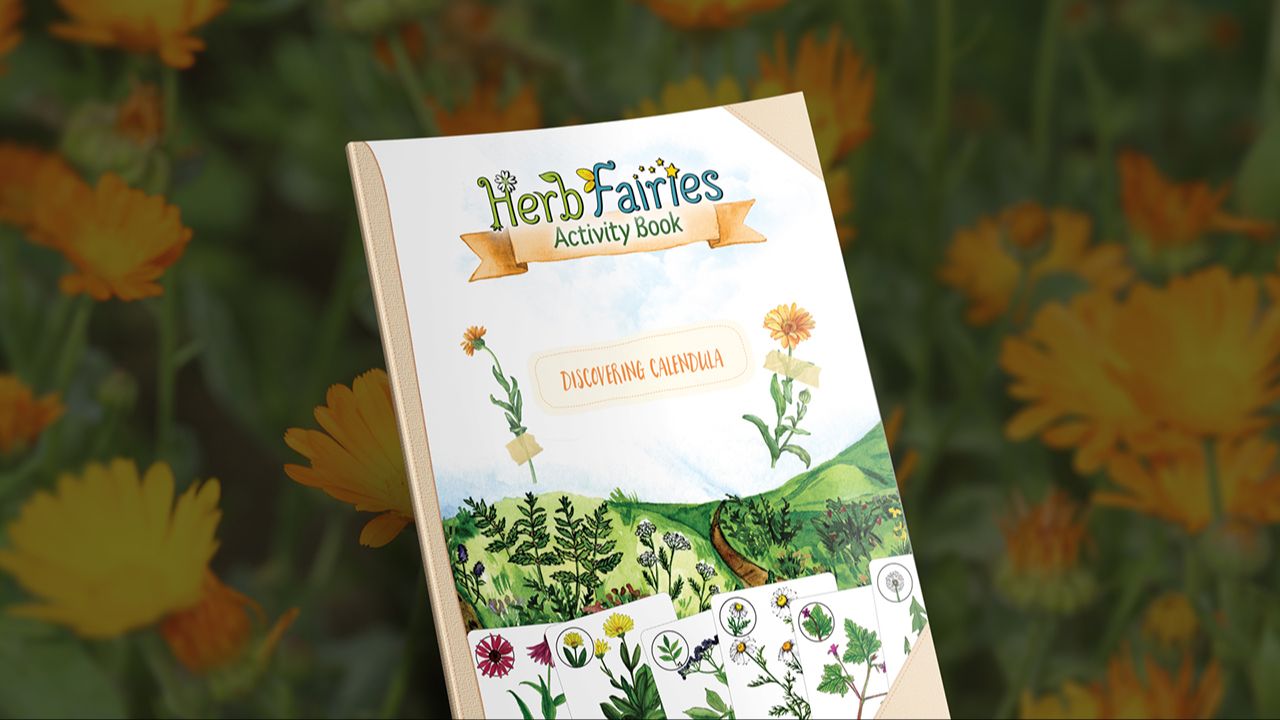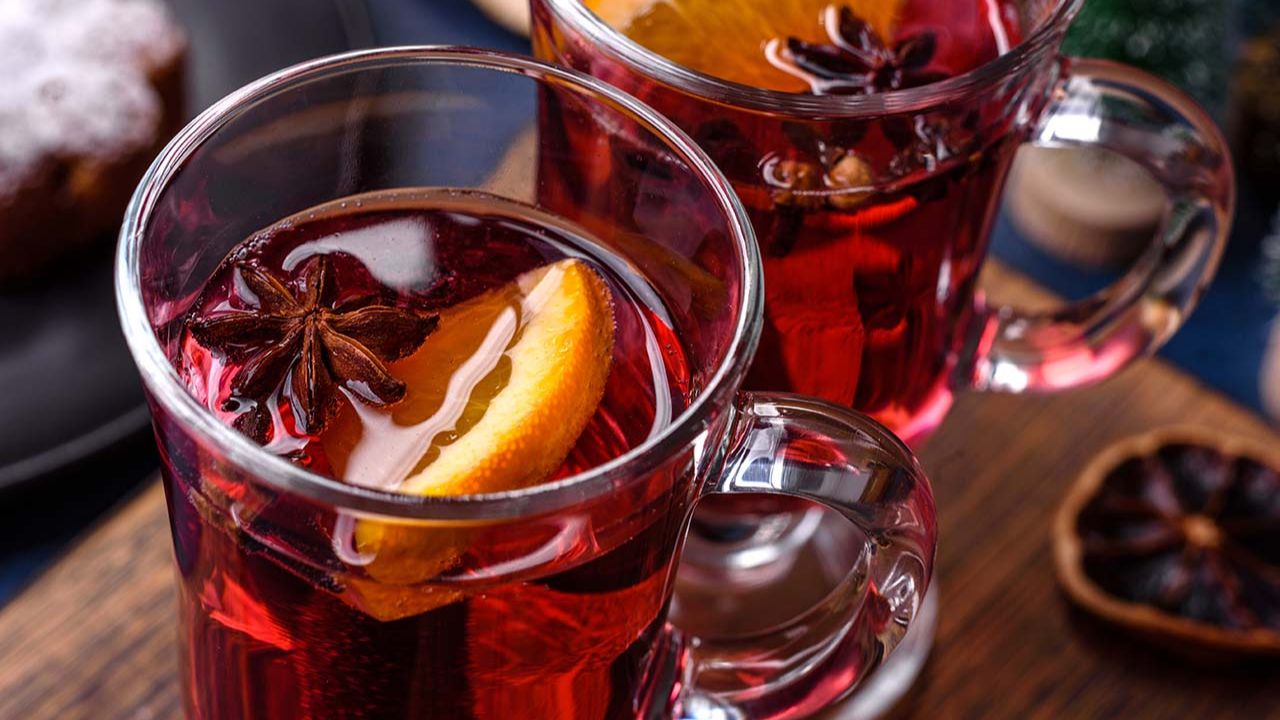You’re instantly transported into the joy and spontaneity of springtime. In your unbridled enthusiasm to be outdoors in the spring sunshine, you might forget that your skin hasn’t been kissed by the sun in months and forego applying sunscreen.
Perhaps you spend the day blissfully gardening or hiking. Before you know it, the sun is setting and you’ve been outside all day. You’re slightly dehydrated, your cheeks and shoulders are pink and radiating heat…and then you shower and the hot water sears your shoulders — OUCH! Darn it, it’s your first sunburn of the season.
What is the first plant you should reach for in those instances? If you guessed aloe, you’re spot on.
Preferably, you can apply the fresh filet of aloe; however, commercial aloe gel preparations will suffice if that’s what you’ve got on hand. Not only does topical gel application greatly relieve the pain and inflammation of sunburns, but did you know that consuming 2–4 fluid ounces of the freshly harvested gel, blended with 4–8 ounces of water will rehydrate you? In order to enhance the flavor and optimize hydration, add fresh-squeezed lemon juice, a dash or two of honey, and a pinch of salt. You’ll feel better inside and out.
This age-old remedy is one of the premier plants to alleviate sunburns, but it also has a myriad of other uses, including soothing and healing ulceration of the digestive tract, modulating immune function, and treating hot, dry skin conditions. If you’re not well acquainted, allow me to elaborate on the medicinal virtues of a delightfully refreshing and heat-tempering plant, aloe.

Aloe Uses & Plant Profile Summary
- Botanical Name: Aloe vera (syn. A. barbadensis), A. arborescens, A. ferox, A. africana, A. perryi, A. spp.
- Other Common Names: Barbados aloe, Curacao aloe, cape aloe, Bombay aloe, Turkey aloe, Zanzibar aloe, Socotrine aloe
- Family: Xanthorrhoeaceae (formerly Liliaceae)
- Parts Used: The gel or juice
- Energetics: Aloe gel is cool and moistening. Aloe juice is cooling.
- Taste: Aloe gel is bland, salty, and sweet. Aloe juice is bitter.
- Plant Properties: Aloe gel is an anti-inflammatory, demulcent, emollient, moisturizer, laxative, immune modulator, antibacterial, antifungal, and vulnerary. Aloe juice is a bitter tonic, choleretic, cathartic laxative, and emmenagogue.
- Plant Uses: Aloe Gel: Digestive inflammation, mild laxative, sore throat, laryngitis, dry cough, sunburn, dehydration, reproductive tonic, wounds, dandruff, and eczema
- Aloe Juice: Very strong laxative
- Plant Preparations: Tincture, succus, capsules, topical creams and lotions, culinary
#block-1701079728979 { margin-top: 0px; margin-right: 0px; margin-bottom: 0px; margin-left: 0px; } #block-1701079728979 .block { border: 4px black; border-radius: 4px; background-color: #fff; padding: 0px; padding: 0px; padding: 0px; padding-top: 20px; padding-right: 20px; padding-bottom: 20px; padding-left: 20px; } @media (min-width: 768px) { #block-1701079728979 { margin-top: 0px; margin-right: 0px; margin-bottom: 0px; margin-left: 0px; } #block-1701079728979 .block { padding: 0px; padding: 0px; padding-top: 30px; padding-right: 30px; padding-bottom: 30px; padding-left: 30px; } } @media (max-width: 767px) { #block-1701079728979 { text-align: left; } } #block-1701079728979 .accordion-title h5 { margin: 0; cursor: pointer; } #block-1701079728979 .accordion-body { padding-top: 24px; } #block-1701079728979 .accordion-title.collapsed:after { content: "\f067"; margin-left: 24px; } #block-1701079728979 .accordion-title:after { content: "\f068"; margin-left: 24px; color: ; } #block-1714425329670 { margin-top: 0px; margin-right: 0px; margin-bottom: 0px; margin-left: 0px; } #block-1714425329670 .block { border: 1px solid #ECF0F1; border-radius: 10px; background-color: #f8f8f8; padding: 0px; padding: 0px; padding: 0px; padding-top: 15px; padding-right: 15px; padding-bottom: 15px; padding-left: 15px; } @media (min-width: 768px) { #block-1714425329670 { margin-top: 0px; margin-right: 0px; margin-bottom: 0px; margin-left: 0px; } #block-1714425329670 .block { padding: 0px; padding: 0px; padding-top: 15px; padding-right: 15px; padding-bottom: 15px; padding-left: 15px; } } @media (max-width: 767px) { #block-1714425329670 { text-align: center; } } #block-1714425329670 .feature__image, [data-slick-id="1714425329670"] .feature__image { width: 100px; border-radius: 100px; } .authorfeature { display: flex; align-items: flex-start; position: relative; } .authorfeature__image-container { flex-shrink: 0; margin-right: 20px; } .authorfeature__image { max-width: 150px; height: auto; } .authorfeature__content { flex-grow: 1; } @media (max-width: 767px) { #block-1714425329670 .authorfeature { flex-direction: column; align-items: center; } #block-1714425329670 .authorfeature__image-container { margin-right: 0; } } #block-1713044221799 { margin-top: 0px; margin-right: 0px; margin-bottom: 0px; margin-left: 0px; } #block-1713044221799 .block { border: 1px solid #f0f0f0; border-radius: 9px; background-color: #f8f8f8; padding: 0px; padding: 0px; padding-top: 15px; padding-right: 5px; padding-bottom: 15px; padding-left: 15px; } @media (min-width: 768px) { #block-1713044221799 { margin-top: 0px; margin-right: 0px; margin-bottom: 0px; margin-left: 0px; } #block-1713044221799 .block { padding: 0px; padding-top: 20px; padding-right: 20px; padding-bottom: 20px; padding-left: 20px; } } @media (max-width: 767px) { #block-1713044221799 { text-align: left; } } #block-1577982541036_0 .btn { margin-top: 1rem; } .awesomecontainer .row .block-type--accordion { align-self: flex-start; }
Aloe Gel Medicinal Uses
Aloe gel (aloe vera gel) is obtained from the inner portion of the leaf. Also referred to as the inner fillet, aloe gel is often erroneously called “aloe juice.” The gel is a clear, mucilaginous or jelly-like substance. Aloe juice has a yellow to brown hue.
Soothes Inflamed Mucous Membranes
Aloe gel contains mucilaginous polysaccharides that have soothing demulcent actions, reducing inflammation in the mucous membranes and skin. It coats the digestive tract and has antiulcer activity., Aloe gel aids in treating upper digestive inflammatory conditions such as hyperacidity, peptic ulcers, ulcerative colitis, intestinal bleeding, and gastric lesions. It also helps to reduce digestive tract inflammation caused by radiation or chemotherapy. Aloe is best consumed 30–60 minutes before meals, or two hours after meals to protect the mucous membranes. Aloe gel lubricates the digestive tract and has mild laxative actions. It also soothes the respiratory tract and aids in treating a sore throat, laryngitis, or a dry cough.
Yin Tonic (Cooling & Moistening)
Aloe gel is hydrating and moistening, which tonifies yin. Consume the gel to treat conditions with heat signs (hot flashes or night sweats, etc.). The gel is a recuperative agent following a debilitating illness, high fever, heat stroke, dehydration, or sunburn. In Ayurvedic medicine, it is administered as a female reproductive tonic to increase fertility, aid in recovery from childbirth, and treat menopausal symptoms such as vaginal dryness, hot flashes, and night sweats, which can be signs of pitta excess.,

Immune Modulator
The gel contains polysaccharides that have immune modulating actions — meaning that it has the potential to bring the immune system into balance whether it is overactive or underactive. Studies demonstrate that acemannan (acetylated mannose), a polysaccharide in aloe, has antiviral and immune potentiating actions. Acemannan has antiviral actions against human immunodeficiency virus type 1 (HIV-1), influenza, and measles. It also synergizes the effects of certain antiviral drugs. Aloctin A (a constituent in A. arborescens) also increases natural killer (NK) cell activity, and stimulates cells cytotoxic to tumor cells in vitro.
Footnotes
- Barras, Colin. “Neanderthal Dental Tartar Reveals Evidence of Medicine.” New Scientist, New Scientist, 18 July 2012, www.newscientist.com/article/dn22075-neanderthal-dental-tartar-reveals-evidence-of-medicine#.Uym1WdxGhOo. ↵
- Wood, Matthew. The Earthwise Herbal: A Complete Guide to Old World Medicinal Plants. Berkeley, CA: North Atlantic Books, 2008. ↵
- Ross, Jeremy. Combining Western Herbs and Chinese Medicine. Verl. für Ganzheitliche Medizin Wühr, 2010. ↵
- Tadić, Vanja, Ivana Arsić, Jelena Zvezdanović, Ana Zugić, Dragan Cvetković, and Sava Pavkov. “The Estimation of the Traditionally Used Yarrow (Achillea Millefolium L. Asteraceae) Oil Extracts with Anti-inflamatory Potential in Topical Application.” Journal of ethnopharmacology 199 (2017): doi:10.1016/j.jep.2017.02.002. ↵
- Hajhashemi, Maryam, Zinat Ghanbari, Minoo Movahedi, Mahmoud Rafieian, Atefeh Keivani, and Fedyeh Haghollahi. “The Effect of Achillea Millefolium and Hypericum Perforatum Ointments on Episiotomy Wound Healing in Primiparous Women.” The journal of maternal-fetal & neonatal medicine : the official journal of the European Association of Perinatal Medicine, the Federation of Asia and Oceania Perinatal Societies, the International Society of Perinatal Obstetricians 31, no. 1 (2018): doi:10.1080/14767058.2016.1275549. ↵
- Ellingwood, Finley. American Materia Medica, Therapeutics and Pharmacognosy: Developing the Latest Acquired Knowledge of Drugs, and Especially of the Direct Action of Single Drugs upon Exact Conditions of Disease, with Especial Reference to the Therapeutics of the Plant Drug. Portland, Or.: Electric Medical Publications, 1919. 247 ↵
- Ross, Jeremy. Combining Western Herbs and Chinese Medicine. Verl. für Ganzheitliche Medizin Wühr, 2010. ↵
- Scudder, John M. A Familiar Treatise on Medicine. Moore, Wilstach & Moore, 1870. ↵
- Ellingwood, Finley. American Materia Medica, Therapeutics and Pharmacognosy: Developing the Latest Acquired Knowledge of Drugs, and Especially of the Direct Action of Single Drugs upon Exact Conditions of Disease, with Especial Reference to the Therapeutics of the Plant Drug. Portland, Or.: Electric Medical Publications, 1919. 247 ↵
- Felter, Harvey Wickes, and John Uri Lloyd. King’s American Dispensatory. Eighteenth Edition. Third Revision ed. ↵
- Vahid, Sepideh, Simin Dashti-Khavidaki, Farrokhlegha Ahmadi, Mohsen Amini, and Mohammad Hosein Salehi Surmaghi. “Effect of Herbal Medicine Achillea Millefolium on Plasma Nitrite and Nitrate Levels in Patients with Chronic Kidney Disease: A Preliminary Study.” Iranian journal of kidney diseases 6, no. 5 (2012): 350-4. ↵
- Kazemian, Afarin, Ali Toghiani, Katayoun Shafiei, Hamid Afshar, Rahmatollah Rafiei, Mahnaz Memari, and Peyman Adibi. “Evaluating the Efficacy of Mixture of Boswellia Carterii, Zingiber Officinale, and Achillea Millefoliumon Severity of Symptoms, Anxiety, and Depression in Irritable Bowel Syndrome Patients.” Journal of research in medical sciences : the official journal of Isfahan University of Medical Sciences 22 (2017): doi:10.4103/jrms.JRMS_905_16. ↵
- Felter, Harvey Wickes, and John Uri Lloyd. King’s American Dispensatory. Eighteenth Edition. Third Revision ed. ↵
- Ibid ↵
- Romm, Aviva Jill. Botanical Medicine for Womens Health. Elsevier, 2010. ↵
- Jenabi, Ensiyeh, and Bita Fereidoony. “Effect of Achillea Millefolium on Relief of Primary Dysmenorrhea: A Double-Blind Randomized Clinical Trial.” Journal of pediatric and adolescent gynecology 28, no. 5 (2015): doi:10.1016/j.jpag.2014.12.008. ↵
- Miranzadeh, Sedigheh, Mohsen Adib-Hajbaghery, Leyla Soleymanpoor, and Majid Ehsani. “Effect of Adding the Herb Achillea Millefolium on Mouthwash on Chemotherapy Induced Oral Mucositis in Cancer Patients: A Double-blind Randomized Controlled Trial.” European journal of oncology nursing : the official journal of European Oncology Nursing Society 19, no. 3 (2015): doi:10.1016/j.ejon.2014.10.019. ↵
- Keeler, Kathleen. “Plant Story– Yarrow, Achillea Millefolium, an Ancient Healing Herb.” A Wandering Botanist, 6 Apr. 2014, khkeeler.blogspot.com/2014/04/plant-story-yarrow-achillea-millefolium_6.html. ↵
Written by Christa Sinadinos
Christa Sinadinos has more than 25 years of expertise as a clinician, teacher, gardener, and medicine maker. She is the author of The Essential Guide to Western Botanical Medicine. Christa is the founder and director of the Northwest School for Botanical Studies in Fieldbrook, California, where she has trained hundreds of students who are the new generation of herbalists. She lectures at herbal conferences and schools throughout the U.S. and publishes articles about botanical medicine. Visit her website here.
#block-1701079728979 { margin-top: 0px; margin-right: 0px; margin-bottom: 0px; margin-left: 0px; } #block-1701079728979 .block { border: 4px black; border-radius: 4px; background-color: #fff; padding: 0px; padding: 0px; padding: 0px; padding-top: 20px; padding-right: 20px; padding-bottom: 20px; padding-left: 20px; } @media (min-width: 768px) { #block-1701079728979 { margin-top: 0px; margin-right: 0px; margin-bottom: 0px; margin-left: 0px; } #block-1701079728979 .block { padding: 0px; padding: 0px; padding-top: 30px; padding-right: 30px; padding-bottom: 30px; padding-left: 30px; } } @media (max-width: 767px) { #block-1701079728979 { text-align: left; } } #block-1701079728979 .accordion-title h5 { margin: 0; cursor: pointer; } #block-1701079728979 .accordion-body { padding-top: 24px; } #block-1701079728979 .accordion-title.collapsed:after { content: "\f067"; margin-left: 24px; } #block-1701079728979 .accordion-title:after { content: "\f068"; margin-left: 24px; color: ; } #block-1714425329670 { margin-top: 0px; margin-right: 0px; margin-bottom: 0px; margin-left: 0px; } #block-1714425329670 .block { border: 1px solid #ECF0F1; border-radius: 10px; background-color: #f8f8f8; padding: 0px; padding: 0px; padding: 0px; padding-top: 15px; padding-right: 15px; padding-bottom: 15px; padding-left: 15px; } @media (min-width: 768px) { #block-1714425329670 { margin-top: 0px; margin-right: 0px; margin-bottom: 0px; margin-left: 0px; } #block-1714425329670 .block { padding: 0px; padding: 0px; padding-top: 15px; padding-right: 15px; padding-bottom: 15px; padding-left: 15px; } } @media (max-width: 767px) { #block-1714425329670 { text-align: center; } } #block-1714425329670 .feature__image, [data-slick-id="1714425329670"] .feature__image { width: 100px; border-radius: 100px; } .authorfeature { display: flex; align-items: flex-start; position: relative; } .authorfeature__image-container { flex-shrink: 0; margin-right: 20px; } .authorfeature__image { max-width: 150px; height: auto; } .authorfeature__content { flex-grow: 1; } @media (max-width: 767px) { #block-1714425329670 .authorfeature { flex-direction: column; align-items: center; } #block-1714425329670 .authorfeature__image-container { margin-right: 0; } } .awesomecontainer .row .block-type--accordion { align-self: flex-start; }
The Herbal Remedy Vault has all of our printable recipe cards...
Enter The Vault












